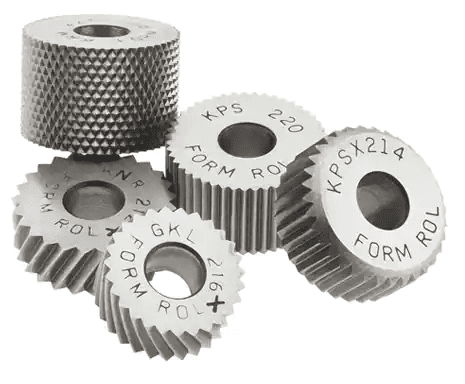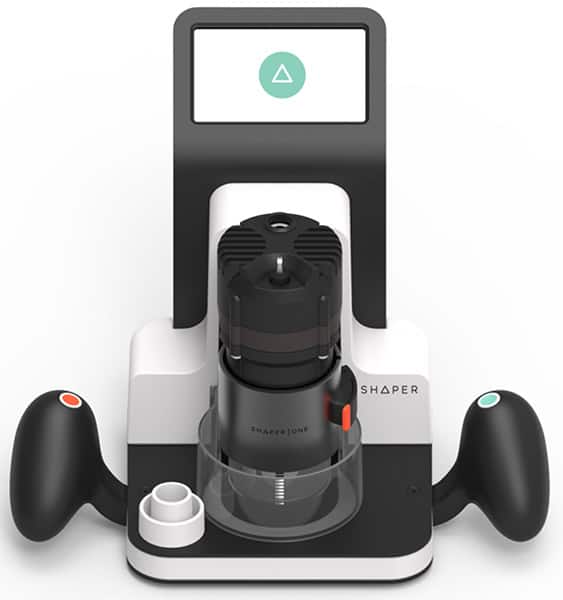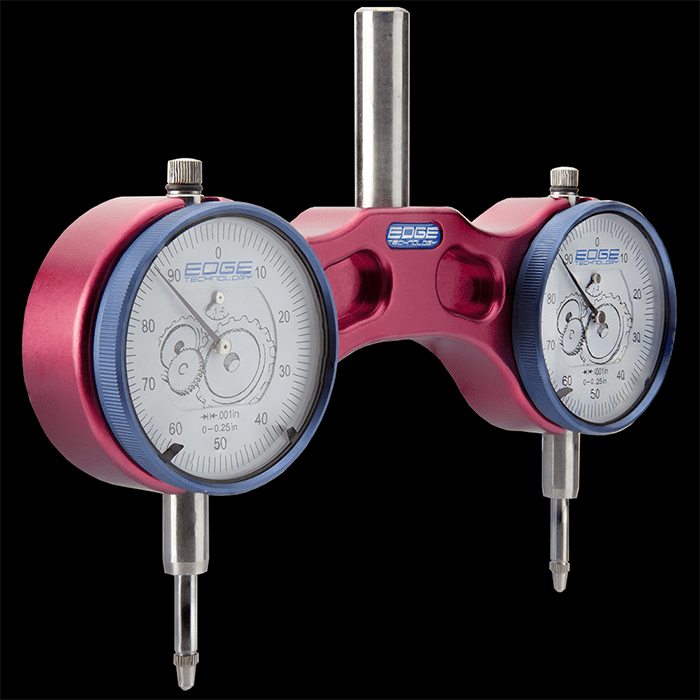9 months by cncdivi
Are you looking to create an enhanced grip and improved safety for your cylindrical workpieces? Lathe knurling tools are the answer you’ve been searching for! These specialized tools not only provide an excellent grip for various applications, but they also deliver a unique visual appeal that sets your work apart from the rest. In this blog post, we’ll delve deep into the world of lathe knurling tools, exploring their benefits, types, and practical tips for use. Get ready to upgrade your lathe work with the power of cutting tools!
Short Summary
- Understand the types, patterns and capabilities of lathe knurling tools to choose the right one for your project.
- Enhance grip and safety with fully heat-treated tools that have been tested for quality assurance.
- Proper setup, alignment and maintenance are essential to maximize efficiency and extend tool longevity.
Understanding Lathe Knurling Tools

Lathe knurling tools are designed to create grip patterns on cylindrical surfaces, enhancing usability and safety for various applications, including industrial lathes and hand tools. They come in a variety of types and patterns to suit your specific needs, ensuring that you can find the perfect tool for your project. In addition to providing increased control of machinery and reducing the likelihood of slippage, knurling tools can be used on a wide range of workpiece diameters to create intricate grip patterns.
As we dive deeper into the world of knurling tools, you’ll discover the intricacies of cut and form knurling tools, as well as the different patterns available, such as straight, diagonal, and diamond. By understanding these tools and their capabilities, you’ll be able to make informed decisions when selecting the perfect tool for your lathe work.
Defining Lathe Knurling Tools
A lathe knurling tool is a manufacturing and repair tool employed on lathes to generate straight, diagonal, or diamond patterns on a workpiece surface. These specialized tools are specifically designed to create grip patterns on cylindrical surfaces, improving usability and safety. Think of the knurled grips on hand tools or the textured patterns on automotive components – these are the products of lathe knurling tools.
Knurling tools come in a variety of patterns, including straight, diagonal, and diamond. Each pattern offers unique grip and aesthetic qualities, allowing you to customize your workpiece to suit your specific application. With a world of possibilities at your fingertips, you’ll never run out of ways to add unique and functional patterns to your projects.
Cut Knurling Tools
Cut knurling tools use sharp-edged wheels to remove material and create a pattern on the surface of a workpiece. These tools offer precise and clean knurls, providing a high level of accuracy and repeatability, making them ideal for producing a wide range of knurl patterns on various materials. The procedure for utilizing a cut knurling tool involves configuring the tool on the lathe, adjusting the depth of the knurl, and then making a single pass across the material.
When using cut knurling tools, it’s essential to follow these safety precautions:
- Wear safety glasses and gloves
- Ensure that the tool is firmly attached to the lathe
- Guarantee that the knurl is not excessively deep, as this could lead to the tool becoming lodged in the material
By following these safety precautions, you’ll be able to achieve accurate and tidy knurls with ease.
Form Knurling Tools
Form knurling tools, on the other hand, use pressure to create patterns without removing material from the workpiece, resulting in smoother finishes and decreased stress. These tools are available in various types, such as revolving head knurling tools, CNC bump type knurling tools, and scissor type knurling tools. Form knurling tools boast adaptability for a variety of shank sizes and feature integrated set screws for simple adjustment of the clearance angle.
Typically, form knurling tools come equipped with a set of coarse, medium, and fine diamond pattern knurls. With these tools, you can achieve a wide range of patterns and finishes, making them a versatile choice for your lathe work.
Types of Knurl Patterns
Knurl patterns can vary in design, including straight, diagonal, and diamond patterns, each offering unique grip and aesthetic qualities. With lathe knurling tools, you have the ability to create a variety of patterns, including square and diamond patterns. These patterns not only enhance the functionality of your workpiece, but also add a touch of visual appeal that sets your work apart from the rest.
Whether you’re looking to create a simple straight pattern for a minimalist grip or an intricate diamond pattern for a stylish finish, lathe knurling tools have you covered. By understanding the different knot patterns available, you can customize your workpiece to suit your specific needs and preferences.
Selecting the Right Knurling Wheels for Your Needs

Choosing the right cranking wheel sets is essential for achieving desired patterns and ensuring compatibility with your lathe setup. Knurling wheels come in a range of sizes and patterns, including:
- Right-handed knurls
- Left-handed knurls
- Square knurls
- Beveled knurls
By considering the diameter, size, and pattern of the wheel, as well as the material being worked with, you can guarantee that the knurling wheel you select will be compatible with your lathe setup and produce the desired results.
As we explore the benefits and applications of different knurling wheels, such as diamond knurls and black oxide finish versus safety yellow enamel, you’ll gain valuable insight into selecting the right knurling wheels for your specific needs.
Diamond Knurls: Benefits and Applications
Diamond knurls offer a versatile grip pattern suitable for various applications, providing both functionality and an attractive appearance. These knurls are often employed to enhance grip and prevent hand slippage on everyday objects and hand tools, supplying a textured pattern on the surface of a workpiece.
Diamond knurls can be employed in a range of contexts, including automotive components, hand tools, and medical apparatus. Additionally, they can be utilized to supply a decorative finish to a workpiece, making them a popular choice for both practical and aesthetic applications, such as providing grip similar to teeth.
Enhancing Grip and Safety with Fully Heat-Treated Tools
Heat-treated knurling tools offer enhanced durability and performance, ensuring consistent results and a longer lifespan. The heat treatment process involves heating and cooling the tools to improve their hardness, strength, and wear resistance. By using heat-treated knurling tools, you can achieve higher quality results and prolong the life of your tools.
In the following sections, we’ll explore the heat treatment process in more detail and discuss how to identify quality heat-treated knurling tools. With this knowledge, you’ll be able to make informed decisions when selecting and maintaining your knurling tools for optimal performance.
The Heat Treatment Process
The heat treatment process involves heating the metal to a specific temperature, holding it at that temperature for a certain duration, and then cooling it. This process can be used to alter the physical and mechanical properties of the metal, including its strength, hardness, and wear resistance. Heat treatment is essential for guaranteeing the quality and dependability of metal parts, as it can enhance the strength, hardness, and wear resistance of metals, making them more resilient and dependable.
By understanding the heat treatment process and its benefits for knurling tools, you can ensure that your tools are properly cared for and maintained, resulting in improved performance and a longer lifespan.
Identifying Quality Heat-Treated Knurling Tools
Quality heat-treated knurling tools can be identified by their consistent hardness, smooth finish, and resistance to wear and deformation. To assess the quality of heat-treated tools, Brinell testing is utilized to measure hardness, while signs of excessive distortion, surface decarburization, quench cracks, large grain growth, and unfavorable residual stresses are inspected.
By investing in quality heat-treated knurling tools, you’ll be able to achieve increased durability, improved grip, and enhanced safety in your work. With the right tools and proper care, you’ll be well-equipped to tackle any knurling project with confidence.
Practical Tips for Using Lathe Knurling Tools
Proper use and maintenance of lathe knurling tools are crucial for achieving optimal results and prolonging tool life. By following practical tips for tool setup, alignment, and care, you can ensure that your knurling tools perform at their best and provide consistently high-quality results.
In the following sections, we’ll discuss proper setup and alignment, as well as caring for your knurling tools. By adhering to these best practices, you’ll be able to maximize the efficiency and longevity of your knurling tools, making them a valuable investment for years to come.
Proper Setup and Alignment
Ensuring correct setup and alignment of your knurling tools is essential for producing consistent patterns and preventing damage to the workpiece or tool. To properly set up and align knurling tools, follow these steps:
- Securely place the knurling tool in the tool post.
- Ensure the axis of the knurling head is at center height.
- Make sure the face of the knurls is parallel to the work surface.
By following these steps, you’ll be able to achieve accurate and tidy knurls with ease.
In addition to proper setup and alignment, it’s important to adhere to the manufacturer’s instructions to guarantee that the knurling tool is correctly set up and aligned, and that the workpiece and tool are not damaged. By following these guidelines, you can ensure successful knurling and prevent damage to your tools or workpiece.
Caring for Your Knurling Tools
Regular cleaning and inspection of your knurling tools will help maintain their performance and prevent premature wear or damage. Tools should be inspected on a regular basis to ensure they are functioning properly. For optimal lubrication during operation, it is recommended to use coolant or oil. This not only helps to keep swarf away from knurling wheels, but also prevents harm to the knurling wheels and ensures they function optimally.
By properly caring for your knurling tools, you can ensure their longevity and maintain their performance, ultimately resulting in more consistent and high-quality results for your projects.
Summary
In conclusion, lathe knurling tools offer a versatile and powerful solution for creating enhanced grip and safety on cylindrical workpieces. By understanding the various types of knurling tools, patterns, and finishes available, as well as proper setup, alignment, and care, you can achieve optimal results and prolong the life of your tools.
With the knowledge and practical tips provided in this blog post, you are now well-equipped to tackle any knurling project with confidence. So, go ahead and unleash the full potential of lathe knurling tools, and elevate your work to new heights of functionality and aesthetics.
Frequently Asked Questions
What are the three types of knurling?
The three types of knurling are straight, diagonal (left or right-hand) and diamond.
How should knurling be done on the lathe?
Knurling on a lathe is typically done by pressing a knurling tool against the workpiece while it rotates, using a small wheel with a patter cut into it that squashes the metal into shape without cutting it.
The knurling tool is usually held in a tool holder and pressed against the workpiece with a steady force. The spinning wheel is then rotated, creating a pattern in the metal. The pattern can be varied depending on the type of knurling tool used.
What is the purpose of lathe knurling tools?
Lathe knurling tools are used to create grip patterns on cylindrical surfaces, increasing usability and safety for the tools the knurling patterns are applied to.
These tools are designed to be used with a variety of materials, including steel, aluminum, brass, and plastic. They can be used to create a variety of patterns, from diamond knurling to straight knurling.
What are the differences between cut knurling tools and form knurling tools?
Cut knurling tools use sharp-edged wheels to remove material while form knurling tools create patterns without removing any material, resulting in smoother finishes with less stress on the workpiece.
Like what you read on CNCCookbook?
Join 100,000+ CNC'ers! Get our latest blog posts delivered straight to your email inbox once a week for free. Plus, we’ll give you access to some great CNC reference materials including:
- Our Big List of over 200 CNC Tips and Techniques
- Our Free GCode Programming Basics Course
- And more!
Just enter your name and email address below:
100% Privacy: We will never Spam you!

Bob is responsible for the development and implementation of the popular G-Wizard CNC Software. Bob is also the founder of CNCCookbook, the largest CNC-related blog on the Internet.



![5 Axis CNC Benefits [There are 7 Big Ones!] 5-Axis Machining](https://www.cnccookbook.com/wp-content/uploads/2012/03/5AxisMillAxes.jpg)


![Lathe Tailstock Camlock for a Mini-Lathe [Easy Time Saver] An industrial mini-lathe on a workshop counter, featuring a chuck, levers, and a tailstock, with visible metal shavings.](https://www.cnccookbook.com/wp-content/uploads/2021/07/P1010375.jpg)
![Machinist Tools Set [ Essential List ] A brown tool chest containing machinist tools, with drawers open on a white background.](https://www.cnccookbook.com/wp-content/uploads/2019/11/img_5de2d6eab76f0.png)
